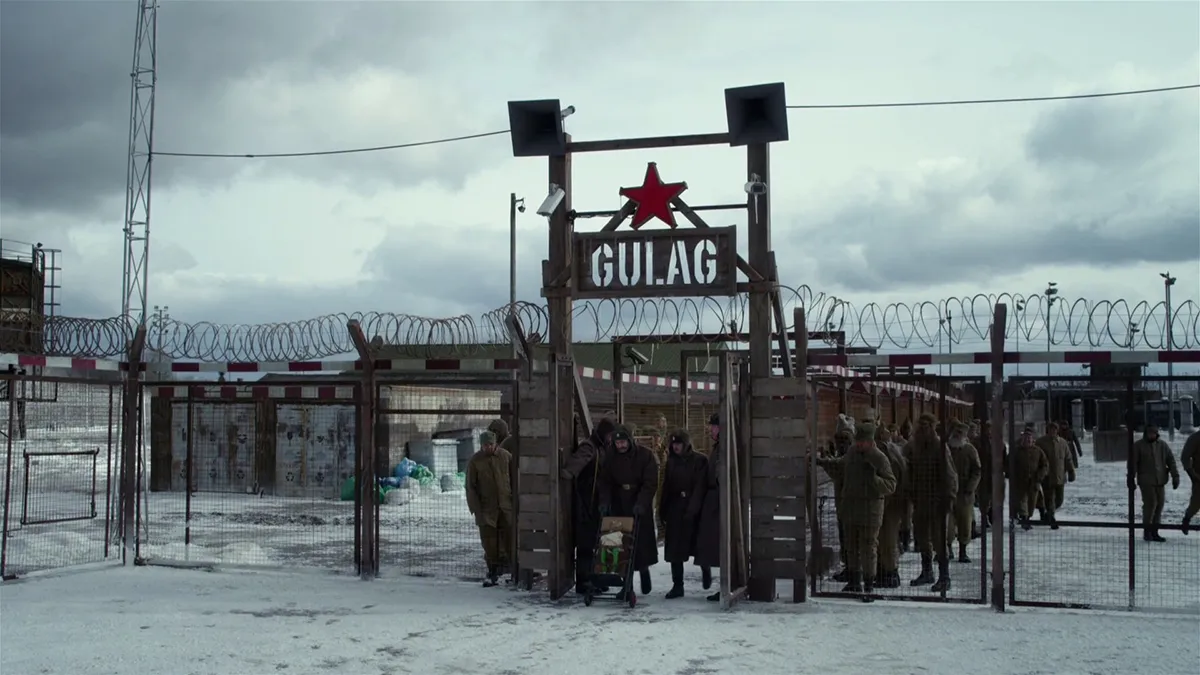Holocaust movies are a Hollywood staple: as Kate Winslet’s character in Extras cynically observes, a Holocaust movie is guaranteed Oscar-bait. Still, it’s hardly surprising that a crime against humanity of such enormity should so exercise the imaginations of film-makers. With so many of the post-War Jewish diaspora landing in America, as well, there is no shortage of writers and film-makers with direct ties to the Nazi monstrosity.
But there is no shortage of Russian emigres who fled the Communist regime living in America, too. A great many of them were Russian Jews. The crimes of the Communists, by sheer body count, dwarfed even those of the Nazis.
So… where are all the Holodomor, Great Terror, or gulag films? This isn’t to diminish the horror of the Holocaust — but, with roughly 700 films released by Hollywood every year, there’s more than enough room to tell the stories of the crimes of Communism without forgetting the Holocaust.
So, where are they? Where’s the Schindler’s List of Communism? Hell, where’s even the equivalent of exploitation dreck like Ilsa, She Wolf of the SS? According to The Movie Database, there are just seven (compared to nearly 30 Holocaust movies, not counting documentaries, in the past two decades alone).
Even a great movie by an Oscar-winning director with a stellar cast, Peter Weir’s The Way Back, starring Colin Farrell, Ed Harris, and Saoirse Ronan, sank with barely a trace. It’s sole Oscar nomination saw it beaten by a remake of The Wolfman.
One could be forgiven for suspecting that left-dominated Hollywood simply doesn’t want to know — and doesn’t want the world to know — about the horrors committed by the Communists. Especially the gulags.
Gulag is the acronym used from 1930 for Glavnoye Upravleniye LAGerey, or Main Camp Administration. This was the government agency in charge of the Soviet network of forced labor camps set up by order of Vladimir Lenin.
Lenin (pictured), together with Leon Trotsky (1879–1940), first mooted the idea of setting up concentration camps, mostly in Siberia, for class enemies as early as 1918.
Of course, the Tsarists had been exiling people to frozen Siberia for centuries. But the Soviets turned it into an industrial-scale tool of the most brutal repression imaginable.
Siberia had long gained its fearful connotation of punishment. But in 1920, the first model camp of the future Gulag system was created, on the Solovetsky Islands in the White Sea region. It was called Solovki, and was ironically housed in a monastery building.
The first prisoners to arrive at this remote outpost were political opponents of the Bolsheviks. Soon, the Solovetsky Islands become the center of the camp system in northern Russia.
In 1923, Solovki contained approximately 3,000 prisoners; by 1930, the number had jumped to nearly 50,000.
Then Joseph Stalin came to power.
Vast “archipelagos” of camps stretching across Siberia grew up at the sites of ambitious economic projects, and provided a convenient source of manpower. One such project was the construction of the White Sea–Baltic Canal.
The death rate on the Canal, a byword for terror, cannot be known for certain. Officially, nearly a quarter of a million prisoners died in the two years it took to construct the canal. It was all for nothing useful: the canal wasn’t fit for purpose and never played a significant role in the Soviet economy.
The mid- to late 1930s represented the period of Stalin’s Great Terror, a campaign of political repression in the Soviet Union also known as the Great Purge. Thousands fell victim, including Communist Party and Red Army officials, members of the civil service, and ‘relatively wealthy’ peasants (kulaks). Many were sent to Vorkutlag, one of the most infamous of Soviet Gulags.
Starvation, torture, beating, rape of female convicts, and summary executions, were routine.
Many prisoners of the Gulag simply froze to death. Tired, weak, and inadequately clothed, they were ill equipped to toil in sub-zero temperatures.
Then there was the aptly-named “Death Road”, another Stalinist project that is believed to have claimed up to a third of the possibly 300,000 prisoners. The Kolyma Highway is likewise dubbed the “Road of Bones”, owing to the fact that the bodies of an estimated 125,000 prisoners, either worked to death or shot for not working hard enough, were buried beneath the road or around it.
Taking place shortly after Stalin’s death, the Vorkutlag Uprising of 1953 initially took the form of a passive walk out by prisoners who were protesting against camp conditions. It later became violent and was brutally repressed. But the die had been cast. That same year at Norillag Gulag a similar strike took place, in what became known as the Norilsk Uprising […]
By 1954 the new Soviet leader, Nikita Khrushchev, had ordered the review of almost four million political crime cases in what became known as the “Khrushchev Thaw.” The Gulag system was finally abolished in 1957.
MSN
Despite Solzhenitsyn’s stark memoirs of the horrors of the gulags becoming best-sellers, Hollywood apparently prefers to forget that the gulags ever happened.
After all, that might imply that communism wasn’t such a great thing.









